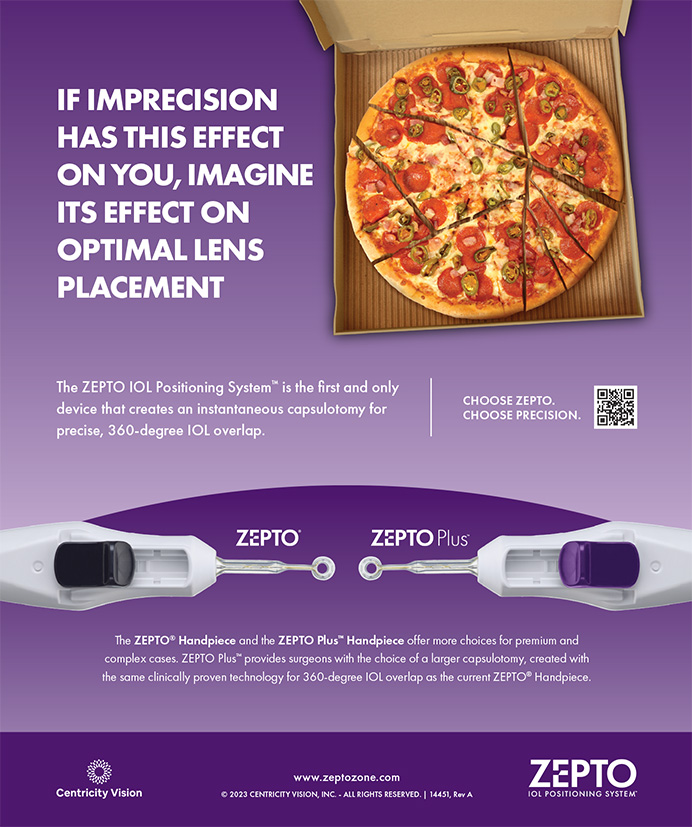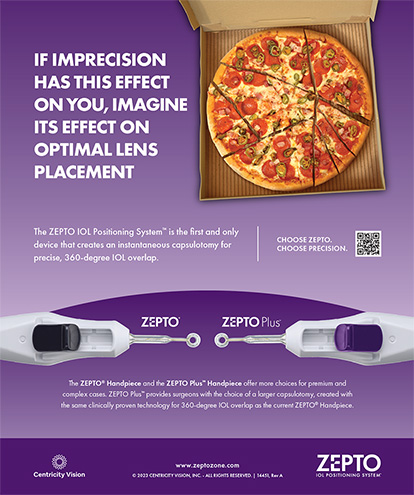Each month, this column will focus on topics pertaining to refractive surgery and the practice of ophthalmology in general. As always, when referring to surgical concepts, my opinions will be based upon personal surgical experience and observations as opposed to theoretical constructs.
Depending upon the topic, the column's format may shift from sharing a single opinion to presenting a point/counterpoint or multiple viewpoints. My goals in this column are to cover important subjects, provoke balanced debate, and—most importantly—improve the care of and results for refractive surgery patients. I welcome comments from my colleagues.
On a personal note, I wish to dedicate The Nordan Perspective to the memory of Professor José I. Barraquer, my mentor in refractive surgery. I am honored that Cataract & Refractive Surgery Today has provided me with an opportunity to discuss issues relating to Dr. Barraquer's dream that “the promise of excellent uncorrected vision become a reality.”
To view the figure related to this article, please refer to the print version of our June issue, page 16.Ophthalmologists have debated the ideal method for centering the optical zone of a keratorefractive procedure since the initial days of radial keratotomy. With respect to laser vision correction, the issue boils down to whether to center the ablation on the visual axis, on the center of the cornea, or concentric with the pupil.
POINTS TO CONSIDERAngle Kappa
Angle kappa is defined as the angle between the geometric axis of the eye (a line running through the macula and the geometric center of cornea) and the visual axis (a line running through the target to the macula). The presence of an angle kappa confirms that the line of sight does not cross through the corneal apex. Angle kappa does not pertain to the relationship between the center of the line of sight and the center of the pupil, but this relationship is critical with regard to centering an ablation.
The Center of the Pupil
The center of the line of sight must be positioned inside the pupil. For that reason, when the pupillary diameter is reduced, the center of the line of sight and the geometric center of the pupil must virtually coincide.
Aberrations
Most optical aberrations after keratorefractive surgery depend upon the “optical stop” of the ocular system—in other words, the pupillary diameter. At the pinhole level (clinically, a pupil of approximately 1.8 mm in diameter), aberrations become increasingly insignificant.
Postoperatively, the relationship between the pupil's edge and the outer edge of the corneal ablation is crucial to successful outcomes. If the corneal ablation is decentered with respect to the pupil, then the patient's effective optical zone is reduced in diameter by twice the amount of this decentration (Figure 1). Decentration creates an asymmetrical relationship in which the patient experiences a severe degree of aberration and unwanted visual symptoms on one side of the pupil and minimal aberration and symptoms on the other side. This asymmetry has a more devastating effect on a patient's level of visual function than does a milder degree of aberration that is consistent for 360º and has the benefit of a larger effective optical zone.
Maximizing Visual Function
Clearly, centering the ablation on the apex of the cornea without regard to the pupil is ill conceived. In order to maximize visual function, the ablation must be concentric with the pupil.
Because the center of the visual axis and the middle of the miotic pupil coincide, the central light rays through the central region of the pupil are treated as though they are entering a pinhole system, that is to say, without deviation. This relationship does not cause aberrations. The optical zone/pupil relationship is of supreme importance.
Implications for Eye Trackers
The points addressed thus far call into question the efficacy of current automated trackers. Is an eye tracker more accurate with a small or large pupil?
CENTERING THE ABLATION
I believe that the most accurate method of centering an ablation is to create a miotic pupil (using 1% pilocarpine) and manually center the ablation in the middle of a small pupil. This technique creates an excellent ablation/pupil relationship. If the pupil is 2.00 mm wide, for example, then the margin of error probably ranges from 0.1 to 0.2 mm. In addition, the laser beam is perpendicular to the cornea at all times and therefore unaffected by parallax, as in the case of eye trackers.
Noted ophthalmologists have estimated that average treatment decentration ranges from 0.25 to 0.50 mm and have stated that decentration of as much as 1.00 mm is within the standard of care. As previously noted, however, a decentration of 0.50 mm decreases the effective optical zone by 1.00 mm and creates asymmetrical aberrations. Also, if customized corneal ablations are to succeed, and if changes in treatment location of 10 to 20 µm are important, then how can a decentration of 300 to 500 µm be acceptable? This degree of decentration would seem to undercut the aims of customized corneal treatments.
Researchers demonstrated that the center of a dilated pupil can differ from the center of a normal entrance pupil and of the line of sight by as much as 1 mm. Centering a corneal ablation, therefore, should never be based on the geometric center of a mydriatic pupil. As I noted earlier, the smaller the pupil, the more accurate the ablation's centration.
Based on my long-term experience, I believe that centering an ablation concentric with a miotic pupil results in better treatment centration than performing an ablation in the presence of a constantly moving pupillary border, with or without the use of an eye tracker. The ideal excimer laser platform may well include a tracking system that can function with a miotic pupil.
It would be instructive to study several series of cases (perhaps 20 patients in each series) by interested surgeons who could compare the results of the first eye (using a manually centered ablation and a miotic pupil) with those of the second eye (using an eye tracker or a manually centered ablation and a reactive pupil). I would expect differences to be more noticeable with higher refractive corrections, especially for hyperopia. Improving our centration techniques will enhance our results.
POSTOPERATIVE REFRACTION
The edge of a medically dilated pupil is located beyond that of the corneal ablation. As a result, the aspheric corneal knee comes into optical play.
Dilating a pupil with drops after keratorefractive surgery is contraindicated if accurate information is to be obtained from the patient's optical system. Whatever happens to the corneal shape outside the physiologic range of the pupil is not applicable to the study of visual function from the patient's perspective. Measuring his refractive error or contrast sensitivity in dim light and/or bright light is reasonable. Not only are these same measurements with a medically adjusted, nonphysiologic pupil of limited clinical usefulness regarding a patient's real-world visual function, this information is actually misleading.
Lee T. Nordan, MD, is the director of Nordan Eye Laser Medical Group in Carlsbad, California. Dr. Nordan may be reached at (760) 930-9696; laserltn@aol.com.

